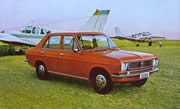“I’m a Custom House Damn It!”
While I’ve heard that exact phrase, I’ve heard many variations over the years. They include, “It’s my job to keep the saws turning.” Or, “We can’t be bothered with any job less than $100,000.” Or my favorite, “Why would I want to sell a $20,000 portable modular display when I could sell a $250,000 custom exhibit?”
It’s hard to argue with that logic, particularly when the economy was humming. But nearly three years into the largest recession since the Great Depression, not everyone can afford to be a snob anymore. As one Account Executive at a well-know Custom House told us about a year ago, “I woke up this morning and realized that if I wanted to feed by family that I had to become a portable modular salesperson.”
For the past 15 years, I’ve been walking into Custom Houses pitching the benefits of adding “systems” to their bag of tricks. And for 15 years, the message has been embraced, tolerated, or dismissed depending on the custom house leadership. No one topic reflects the overall attitude of senior management more than their acceptance or disgust of portables. It trickles down to every person in the organization.
 But the recession put a dent in that dismissive attitude, at least for those folks who saw their custom business decline by 70-80%. Suddenly the arguments that made no sense two years ago are now logical, brilliant, and very customer friendly.
But the recession put a dent in that dismissive attitude, at least for those folks who saw their custom business decline by 70-80%. Suddenly the arguments that made no sense two years ago are now logical, brilliant, and very customer friendly.
So let’s take a moment to list the pros and cons of adding “systems” solutions to the overall product assortment of a Custom House.
Cons:
- Purchasing from a systems manufacturer means the business isn’t being done “in house” (the saws are not turning).
- The price points are generally less than a custom build.
- Portables and modular displays take time and the overall dollar return is less (i.e., it’s a distraction).
- Our clients are too good for portables. Which translates to, “We’re too good for portables.”
Pros:
- The margins are almost always higher for far less work.
- All Custom customers need portables, whether it is banner stands, pop ups, hybrid displays, or hanging signs. Why would you turn that business over to someone else? Someone who is a potential long-term competitor?
- All Portable customers are potential Custom customers. It’s like investing in the stock market. You can choose to invest exclusively in the Fortune 500 companies or you can take a risk and look for greater returns in NASDAQ.
- Storage fees are storage fees and prep work is prep work. Do you really care if it’s for a 10 x 20 inline hybrid or for a custom inline?
- Systems manufactures are willing to do all the heavy lifting – design, project management, and construction.
- Blending custom with portable/modular components has never been easier. Custom houses build the elements that make sense for their shop and system manufacturers add the elements that add value. Gone are the days of the folding fabric system and pop up as the all-in-one answers. Engineered aluminum extrusions and tension fabric graphics now allow an exhibitor to get a relatively custom look but at a more affordable price.
- Many systems manufacturers have made it easy to add their products to any website by offering a distributor-branded interface (ex. Exhibit Design Search).
- Finally, many system manufacturers offer custom and customizable solutions at prices and margins that many custom houses can’t approach.
If you’re surprised that the arguments are stacked heavily in favor of adding portable, modular, and hybrid exhibits to the mix, then allow me to direct your attention to the logo at the top of the screen. It was never intended to be a fair fight.
I will offer a piece of advice based on my 15 years of experience. Even Custom Houses that “get it” are not all equally successful with these products. The ones that consistently do several million dollars, year in and year out in portable/modulars, have something in common. They recognize that not everyone can or should know everything about “systems,” but every designer, every account executive, and every project manager needs to lean on someone who does. Those houses have a “systems” team. That team fields all questions, interacts with the manufacturers, and processes all orders. They make it easy on the custom house because they understand the products, the manufacturers, and the custom house customers.
So . . . the next time an exhibit customer requests an affordable, attractive display for less than $15,000, don’t send them away. Embrace them. It’s $8,000 in your pocket and that $15,000 may eventually turn into a project with one or two more zeros.
What’s your take? Let me know.
–Mel White
http://www.linkedin.com/in/melmwhite
mel@classicexhibits.com













